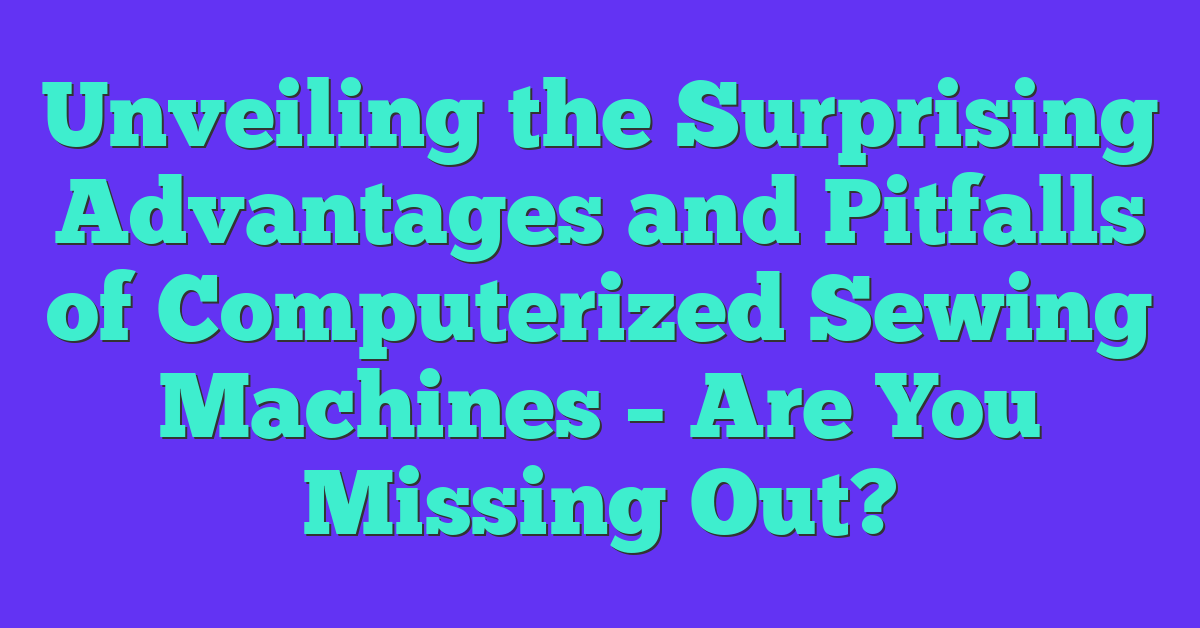Ever wondered if your sewing machine is low shank but didn’t know where to start? You’re not alone. Understanding the type of shank your machine has can make a world of difference in your sewing projects, especially when it comes to choosing the right presser feet and attachments.
Understanding Sewing Machine Shank Types
Knowing your sewing machine shank type is crucial for selecting the right accessories and ensuring optimal performance. Understanding these types helps in making informed decisions about presser feet and attachments.
What Is a Sewing Machine Shank?
A sewing machine shank refers to the part of the machine that holds the presser foot in place. The shank connects the presser foot to the machine’s needle bar. Different shank types exist, including low, high, and slant shanks. Each type affects compatibility with various presser feet and attachments.
Low Shank vs. High Shank: Key Differences
Attachment Height:
Low shank machines have a shorter distance from the presser foot to the needle plate, which typically measures ¾” (0.75 inches). High shank machines have a longer distance, usually around 1¼” (1.25 inches).
Compatibility:
Low shank machines often use standard presser feet, while high shank machines require specific feet designed for the taller shank. Brands like Singer and Brother commonly produce low shank machines.
Project Types:
Low shank machines suit home sewing tasks and smaller projects due to their versatility with standard attachments. High shank machines often cater to industrial tasks, handling thicker fabrics and more complex stitching.
By understanding these differences, you can better identify and use the proper presser feet and attachments for your sewing projects.
Identifying Low Shank Sewing Machines
Knowing the shank type of your sewing machine is crucial for choosing the right presser feet and attachments. Follow these steps to identify a low shank sewing machine.
Visual Inspection Methods
Check the space between the presser foot and the needle plate. Low shank machines have a smaller gap when the presser foot is down, usually around 0.5 inches. Examine the presser foot attachment; low shank feet sit closer to the needle plate compared to high shank feet. Look at the vertical length of the shank from the needle plate to the screw that attaches the presser foot. In low shank models, this length appears shorter.
Why Knowing Your Shank Type Is Important
Determining your sewing machine’s shank type ensures you choose compatible attachments and presser feet, optimizing your sewing projects.
Compatibility with Presser Feet
Presser feet designed for specific shank types provide better performance. Low shank sewing machines, which have a vertical height of about 0.5 inches from the presser foot to the screw, work best with low shank feet. Using inappropriate feet may result in poor stitch quality or damage. For example, high shank feet may not fit properly on low shank machines, causing inefficient sewing.
Impact on Sewing Projects
Your sewing project quality relies on using the correct presser feet and attachments. Low shank machines, suitable for general sewing tasks like hemming and quilting, deliver consistent results when equipped with compatible feet. Projects requiring heavy fabrics or multiple layers benefit from low shank machines by providing stability and precise control. Accurate shank identification avoids project delays and material waste, ensuring a smooth sewing experience.
Tips for Buying the Right Accessories
Choosing the right accessories for your sewing machine is crucial for optimal performance. Understanding your machine’s shank type helps make informed decisions. Here are some tips to guide your purchase decisions:
- Identify Your Shank Type
Accurately identify your machine’s shank type to ensure compatibility. Low shank machines have a vertical height of about 0.5 inches from the presser foot to the screw. Proper identification helps you select the right presser feet and attachments. - Check Manufacturer Recommendations
Manufacturers often provide a list of compatible accessories. Refer to these recommendations in user manuals or on official websites. Using brand-specific accessories can enhance the machine’s performance and longevity. - Measure Attachment Height
Measure the distance between the presser foot and the attachment screw if unsure about the shank type. Accurate measurement lets you purchase the correct attachments, ensuring seamless integration and functionality. - Read Reviews and Product Descriptions
Read reviews and detailed product descriptions to gauge user experiences and product specifications. Verified reviews often highlight compatibility issues and provide insights on accessory performance. - Look For Versatile Options
Opt for versatile accessories that work across multiple brands or shank types. Universal presser feet and adapters can be valuable additions to your sewing toolkit, offering flexibility and convenience. - Consider Project Requirements
Consider project-specific requirements when selecting accessories. For instance, quilting projects may benefit from specialized feet like walking feet or quarter-inch feet, while general sewing might only need standard presser feet. - Quality Over Price
Prioritize quality over price to ensure durability and efficiency. High-quality accessories often offer better performance, longer lifespan, and more precise results, providing better value in the long run. - Consult with Experts
Consult sewing experts, either online or at your local sewing supply store. Expert advice can be invaluable, helping you avoid common pitfalls and find accessories that truly complement your sewing machine.
Applying these tips can help you select the right accessories, enhancing your sewing machine’s functionality and improving your overall sewing experience.

Conclusion
Understanding whether your sewing machine is low shank can significantly enhance your sewing experience. By identifying the correct shank type, you’ll be able to choose the right presser feet and attachments, ensuring your projects turn out beautifully. Remember to measure accurately, consult manufacturer recommendations, and prioritize quality when purchasing accessories. These steps will help you make informed decisions and get the most out of your sewing machine. Happy sewing!

















